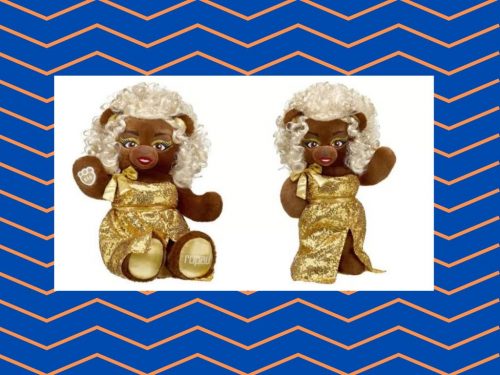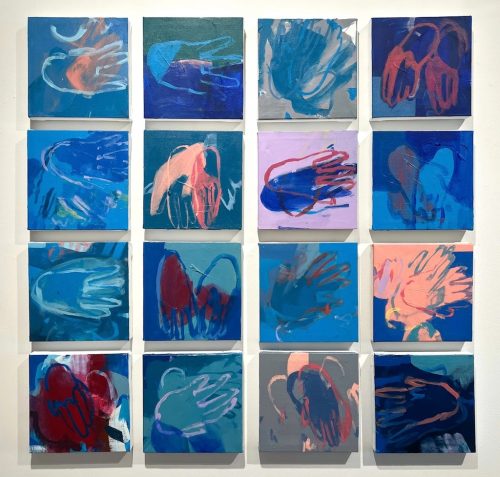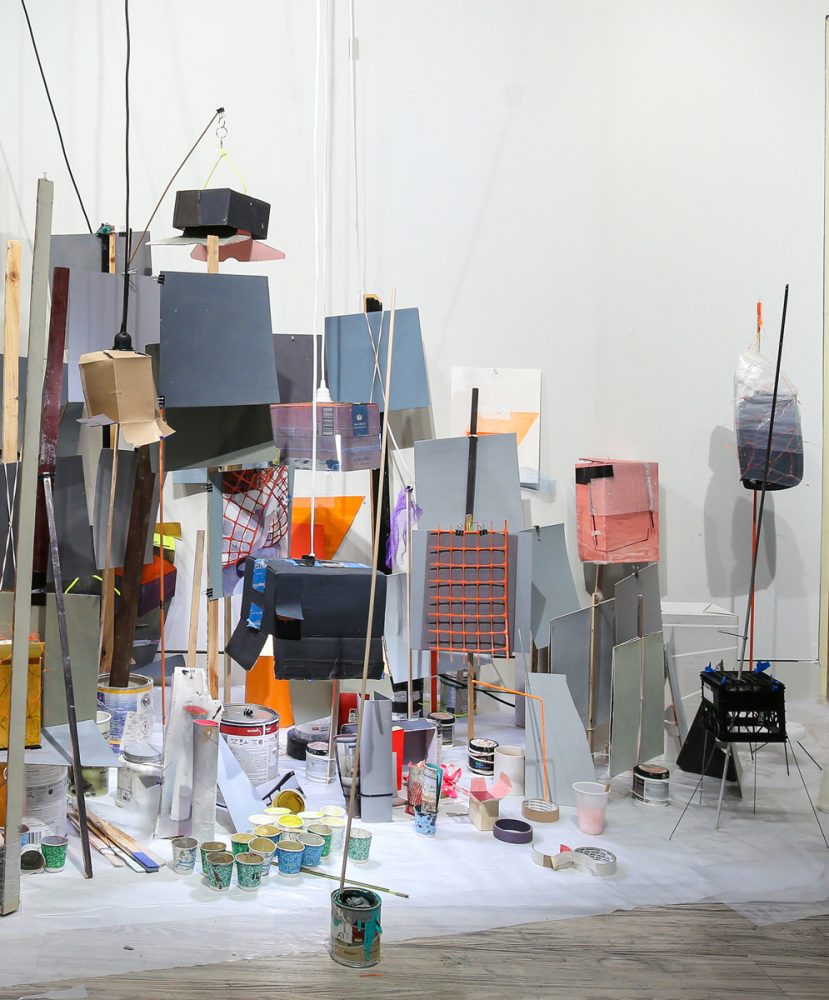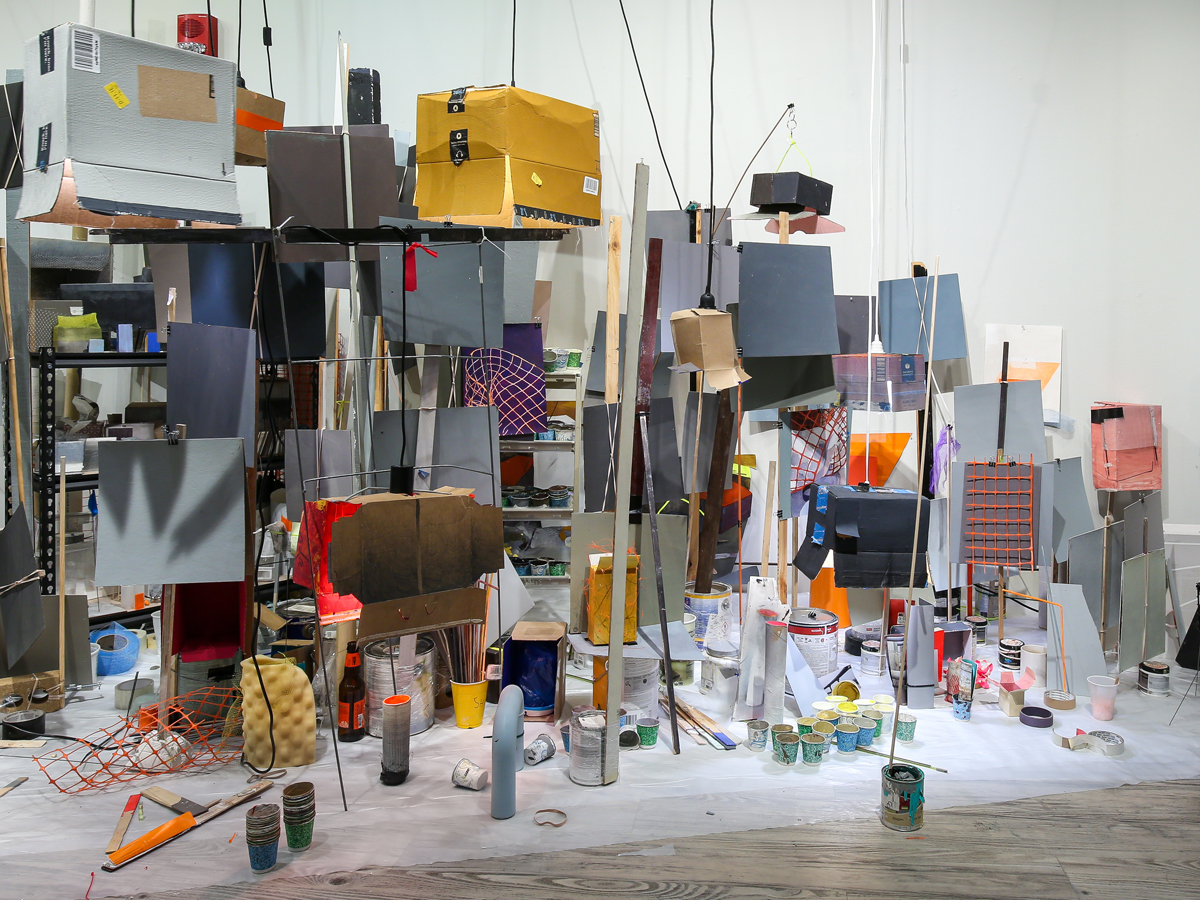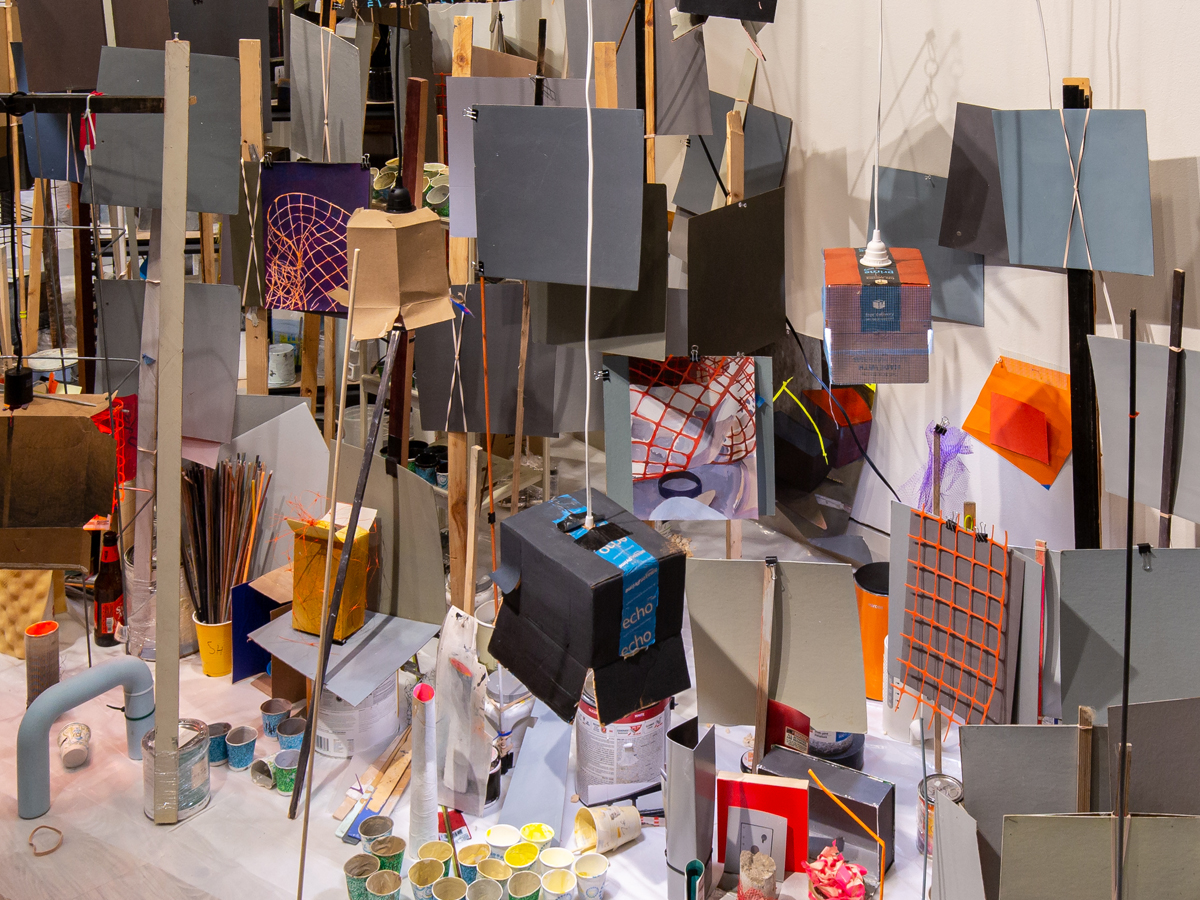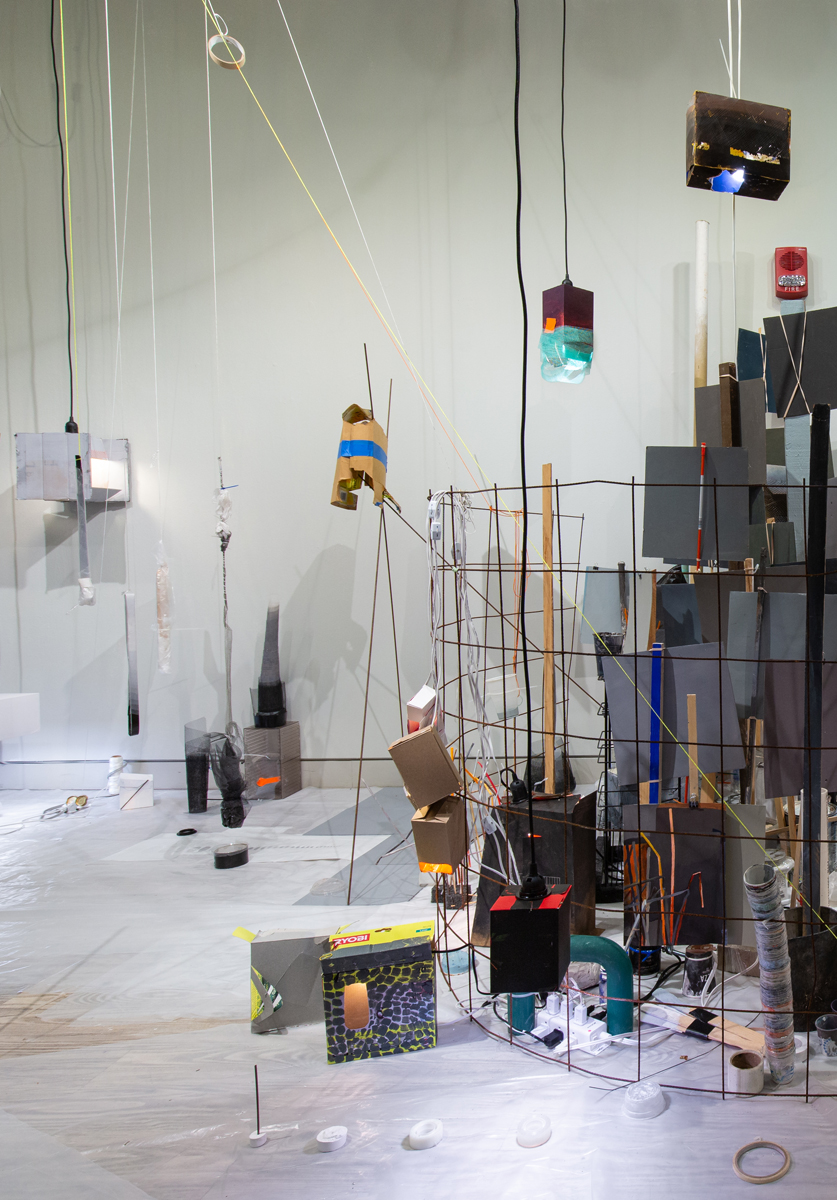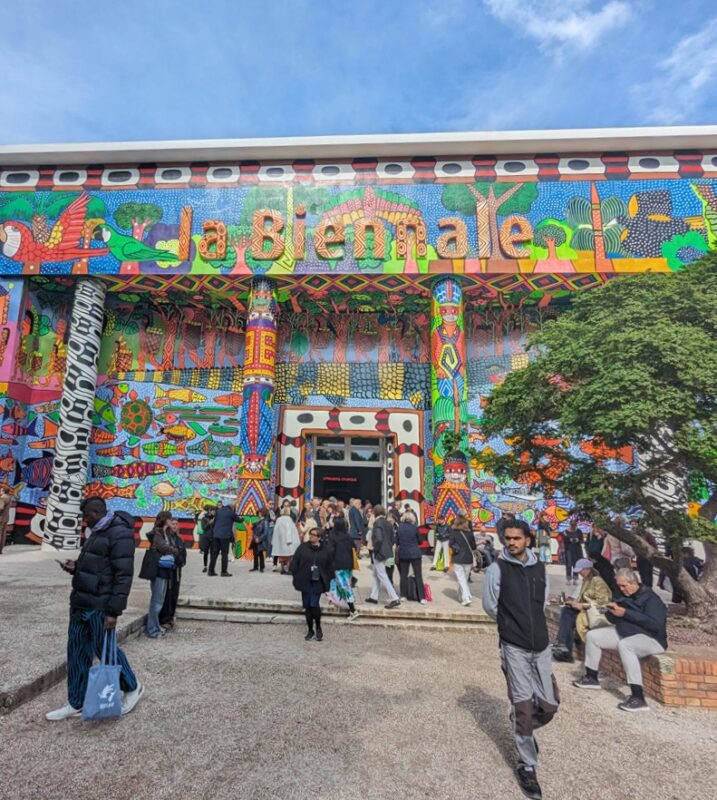So, before we… well we can’t really leave the color grey, but I have known you for a long time and you have always been into grey, I’ll cycle through colors and have my green phase and my purple phase and try them all, but you’ve been pretty loyal to grey.
This might also just be longer, Bart, because what you guys don’t know is that before I was into the grey, I was really into brown! And I had this whole theory of brown because you know brown contains all the colors right, because it’s mixed with the primaries. When my sister came over to see the show, she was like, “Grey!? You told me brown contained all the colors, not grey!!” And she’s a performer and she and her partner had devised a whole brown outfit. She was disheartened, so I think I am like a serial monogamist. I was with brown for like a number of years, but this grey has been 10 years.
That sounds about right! And the thing I like about grey—and when I teach color theory, I always have students mix greys without using black—I like that you said that it contains all the colors, because that means it’s kind of infinitely interesting right?
Exactly! Because I mean, I think you can even have a yellow grey.
I mean in comparison to something else and then you’re like into your color theory. It covers the entire spectrum but it’s just that the steps between them are really small so you have to pay attention, but then you are into these greys [Turns her laptop towards the large installation behind her] some of them are blue, some of them are brown, maybe, but they look really colorful, there’s such a diversity once you recalibrate so that you are looking at the divisions.
Yes, it’s a very colorful looking installation.
Right, yes, it’s very colorful yet people still step in and say there is still a predominance of this color grey and it’s so city-like, I get that a lot. Bart, you know this, right, so people ask where did the grey come from and I am like, well I was landscape painting for a number of years and not being from here, the freeways really struck me, just the size of them and then in Ireland of course the roads aren’t grey they are black.
Yeah, that’s true.
Right, they are tar, which it couldn’t be here because it would melt, so that’s why they are grey here. So that’s why being drawn into the greys in the landscape is very much from being in The States and coming from somewhere else where that is not the case—a small detail that is everywhere.
Did you paint landscapes when you lived in Northern Ireland?
No, I didn’t start painting until I came to The States. I started painting in California, and it’s interesting, when I look at the landscapes, when I was painting there I often put Alizarin Crimson underneath everything to start with. If you go and look at California paintings you will often see this pink color coming up again and again because the light there is pink, and here it’s not. Here it is much colder, here it is more similar to Northern Europe. In California it is a different colored light.
Right, so that would make sense for artists like Diebenkorn I suppose.
Exactly! If you look, that pink color will come up again and again.
And Diebenkorn used a lot of grey I think, but there’s a lot of under color. There are a lot of other colors sneaking through in your installation as well. Am I right to say I saw a few sneaky paintings?
[Jumps up again with laptop in hand and starts towards her installation] [Smiles] Yes!
There are paintings, like literal paintings hanging in there! [Points laptop towards painting]
I saw that one, and it’s a painting of construction netting.
Yes, there are a number of paintings and the construction netting appears in like three paintings in there.
So, are the paintings new?
You know it’s one of these funny things Bart, where you think it’s something that you just started doing, but this is one of the first paintings that I did since grad school [Gets up again and walks towards installation] this little one in here. So yes, it’s new, but then I think back on paintings I was doing twenty years ago when I was painting little pictures, images of boxes that I had painted, so like I was painting objects and then painting paintings of those objects, so I was like not so new.
It is funny how; I do that too with my own stuff where I think I am onto something new and then I go and look through old work and I am like, “oh I was doing that 7 years ago.”
Yes, but I think it’s because you know your visual interests—they change, but there is always something underlying. But see the end of the exhibition? [points to corner behind her] I call it the tundra. So this is really busy and full this part—and then you slip over here [walks towards the tundra] and it’s much more sparse and the chromatic greys have disappeared and all of the greys here are achromatic; they are all in grey scale.
So, you are interested in that, or you could kind of call it the liminal landscapes of North America, you’re into freeway exit ramps. What’s that all about?
Partly it was practical, you know those are the, I mean I’ve said this for years like, those are the landscapes that we actually spend a lot of time in. You know when someone says landscape painting and you know you think of rolling hills. I’m teaching at the minute and if I say landscape, they all draw sunsets on the beach and I love sunsets on the beach, but how much time do you spend there? Very little. And it was especially being a parent, you know when the kids were young, you spend a lot of time in parking lots and alleys.
[Bart laughs.]
I was commuting back and forth, it was the side of the train tracks at one point, but that’s the kind of landscape that you see. So, this idea of like the freeways and that huge infrastructure was so foreign to me coming from Northern Ireland you know?
Yeah, it is a different space and while you are in those spaces it feels different, you are always waiting or on the way to something or you don’t want to be there.
Yeah, the other thing that I love about those spaces of course is they are not groomed. Funnily enough they are not wrapped in design, they are not trying to tell you something. They still tell you a lot of information, you could learn a lot from them, but it doesn’t come from a marketing department. I worked for years as a graphic designer.
Yeah, it’s kind of like behind the scenes.
Yeah, so that’s why I like keeping all the visuals [Points behind at installation] and letting all the behind the scenes be important and be seen. It’s interesting to me, I mean I know a lot of people do, but I love images of people’s studios. Like Francis Bacon’s studio—I mean, I think I would rather look at his studio than his work.
Do you need the mess to work?
Ah yeah [Laughs]
Does it ever get really tidy and then get messy again or is it always a mess?
Yes absolutely! I clear it all out.
Yes, me too. It’s interesting… I mean, Meaghan, my wife, just asked me recently, “why do you keep tidying it up?”
I like the idea that when I am in the midst of the mess, I can find things so that I can organize … but then as I’m working it all sort of falls apart. So, the paintings that I make are paintings of the moments that I look over and I’m like “oh how I left things sitting there! and the light! and that is gorgeous!” If it was all organized those moments wouldn’t happen, and they are the in-between moments. They wouldn’t be there.
